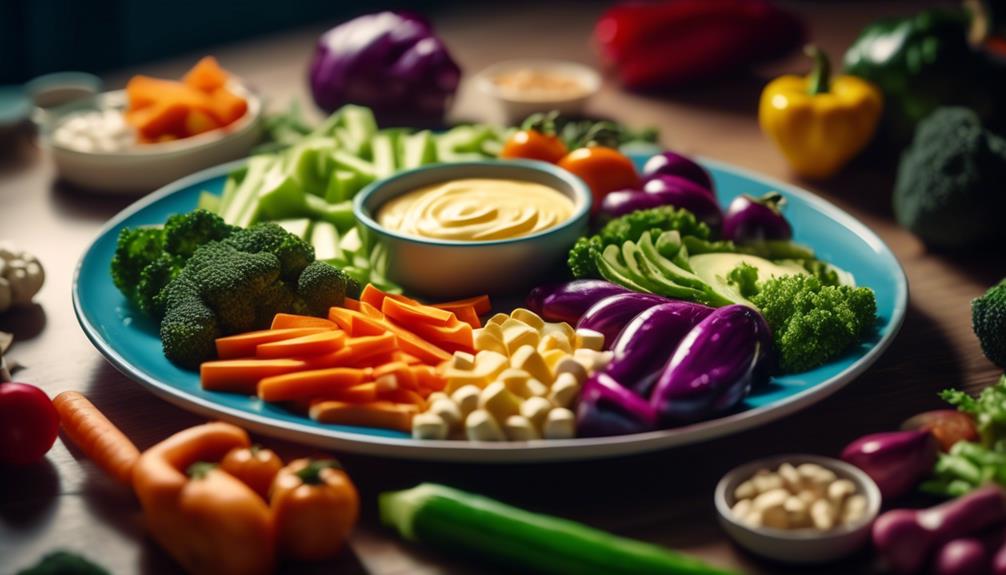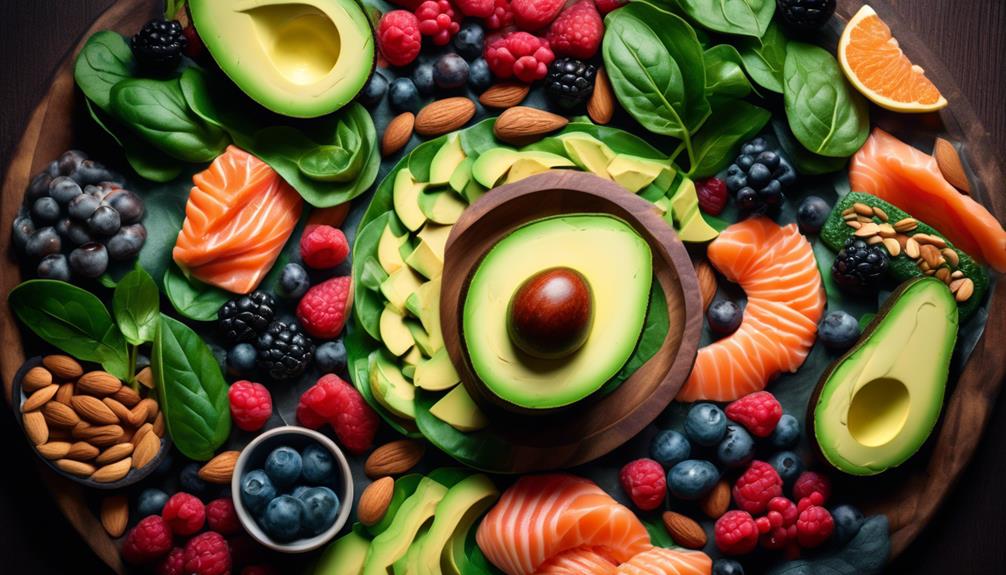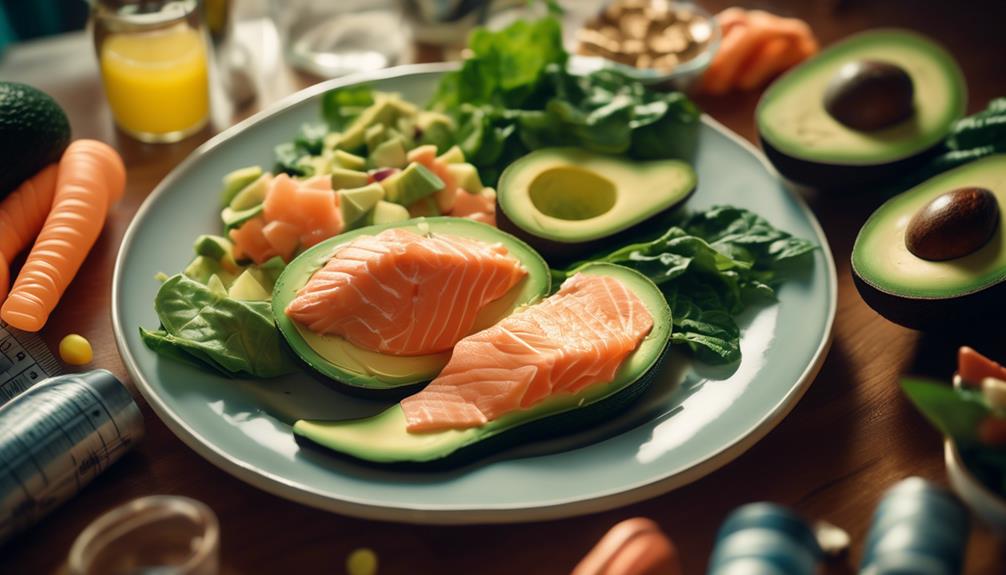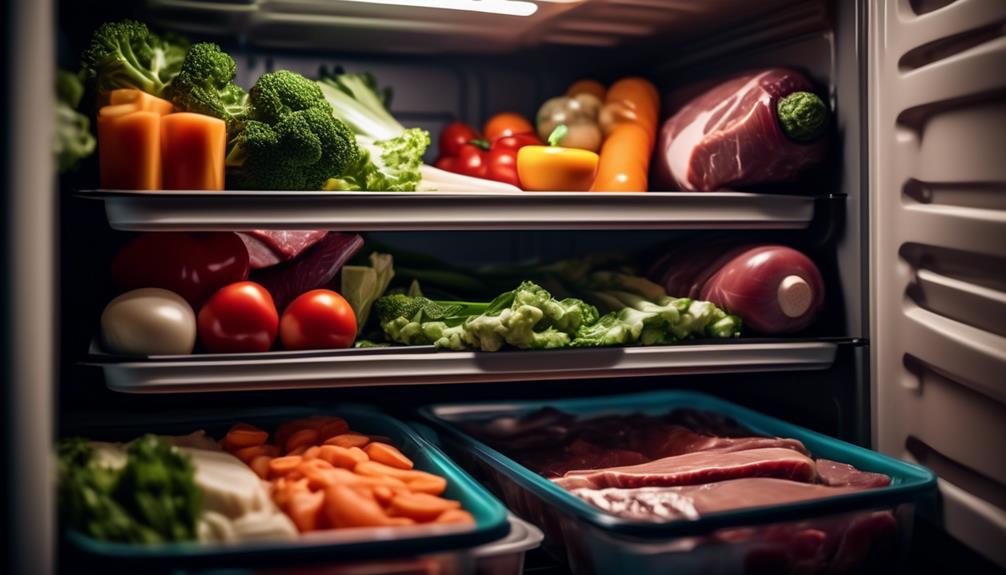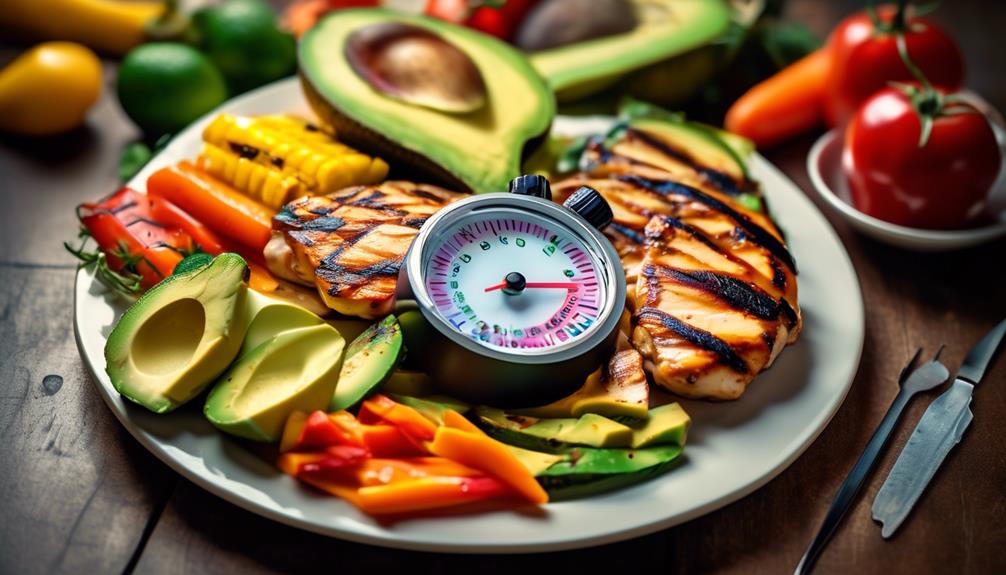Are your cravings driving you up the wall? Like a relentless itch that just won't go away, they can be frustrating to deal with. But fear not, because we have a solution that might just be the key to regaining control.
In this guide, we'll dive into the world of the ketogenic diet and how it can help you keep those cravings at bay. But it's not just about following a specific eating plan – it's about understanding the science behind cravings, identifying triggers and patterns, and implementing strategies to combat them.
So, are you ready to discover a whole new way to conquer your cravings and achieve your health goals? Let's get started.
Understanding Cravings on Keto
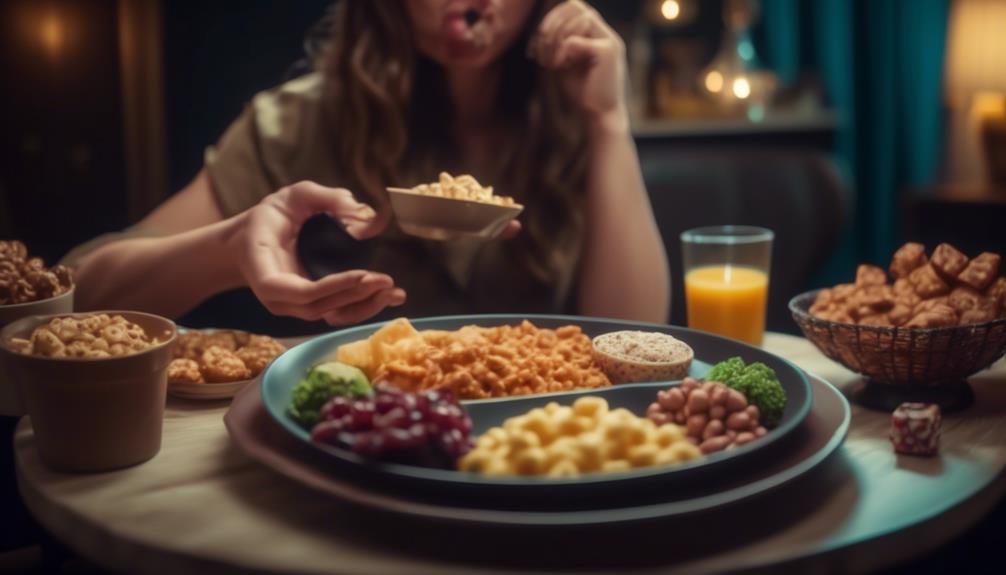
If you're following the keto diet, you may find yourself wondering why those pesky cravings seem to persist, despite your efforts to eat low-carb and high-fat foods. Understanding cravings on keto is essential for successful cravings management.
When you drastically reduce your carbohydrate intake, your body enters a state of ketosis, where it burns fat for fuel instead of glucose. However, cravings can still occur due to various reasons.
One reason for cravings on keto is that your body is adjusting to the new way of eating. It takes time for your taste buds and brain to adapt to the absence of sugary and starchy foods. Additionally, cravings can be triggered by psychological factors such as stress, emotional eating, or habits developed over time.
To manage cravings on keto, it's helpful to have keto-friendly alternatives on hand. Stock your pantry with nutritious options like avocados, nuts, seeds, and berries. These foods provide healthy fats and fiber, which can help satisfy cravings while keeping you in ketosis.
Incorporating moderate amounts of dark chocolate or keto-friendly desserts made with natural sweeteners like stevia or erythritol can also help curb cravings for something sweet.
The Science Behind Cravings
Now that you understand why cravings can still occur on the keto diet, let's explore the science behind these persistent desires for certain foods. Cravings aren't simply a result of willpower or lack thereof; they've a biological basis rooted in our physiology. Understanding the biology of cravings can help you better manage and control them.
The biology of cravings is complex, involving various physiological responses in our bodies. Here are two key factors that contribute to cravings:
- Hormonal Imbalances: Hormones play a crucial role in regulating our appetite and cravings. When we consume carbohydrates, our blood sugar levels rise, leading to the release of insulin. Insulin helps transport glucose into our cells for energy. However, on a keto diet, where carbohydrate intake is severely restricted, our bodies produce less insulin. This can result in blood sugar fluctuations and imbalances, triggering cravings for quick sources of energy.
- Neurotransmitter Activity: Neurotransmitters are chemical messengers in our brain that regulate our mood and behavior. Dopamine, in particular, is associated with pleasure and reward. When we eat certain foods, dopamine is released, creating a sense of satisfaction and pleasure. When we restrict carbohydrates, dopamine levels may decrease, leading to cravings for foods that can boost dopamine levels, such as sugary or high-carb foods.
Identifying Triggers and Patterns

To effectively identify triggers and patterns that may lead to cravings and derail your keto diet, there are several techniques you can use.
Trigger recognition involves being mindful of the situations, environments, or emotions that prompt your cravings. By analyzing your behavioral patterns, such as the time of day or specific activities, you can uncover recurring triggers.
Additionally, it's important to identify any emotional connections you have with food, as emotional eating can sabotage your progress.
Trigger Recognition Techniques
By employing trigger recognition techniques, you can effectively identify and analyze the triggers and patterns that impact your adherence to the keto diet. Recognizing and managing triggers is crucial for successfully managing cravings and maintaining a ketogenic lifestyle.
Here are some techniques to help you recognize and address your triggers:
- Self-reflection and awareness:
- Keep a food journal to track your cravings and identify patterns.
- Pay attention to your emotions and stress levels when cravings arise.
- Environmental cues:
- Identify specific situations, places, or people that trigger cravings.
- Modify your environment by removing tempting foods or finding healthier alternatives.
Behavioral Patterns Analysis
Identifying triggers and patterns through behavioral patterns analysis is essential for understanding the underlying factors that impact your adherence to the keto diet.
By keeping a food journal, you can track your eating habits and identify any patterns or triggers that may be causing cravings or derailing your progress. Take note of the times when you feel the strongest cravings or when you tend to overeat. This can help you identify specific situations or emotions that may be triggering your cravings.
Additionally, practicing mindfulness techniques can also be helpful in recognizing and addressing these triggers. Mindfulness techniques, such as deep breathing or meditation, can help you become more aware of your thoughts, emotions, and physical sensations, allowing you to make more conscious choices about your eating habits.
Identifying Emotional Connections
Recognizing the emotional connections to your eating habits is crucial for understanding the triggers and patterns that may be impacting your adherence to the keto diet. Emotional eating refers to the tendency to eat in response to emotions rather than physical hunger. By engaging in self-reflection, you can identify the underlying emotions that drive your eating behaviors and develop strategies to address them.
Here are some steps to help you identify emotional connections:
- Keep a food and mood journal: Track your food intake and the emotions you experience before, during, and after eating. Look for patterns or correlations between certain emotions and specific food choices.
- Practice mindfulness: Pay attention to your thoughts and feelings when you feel the urge to eat. Are you truly hungry or is there an emotional trigger at play?
- Seek support: Discuss your emotional eating habits with a therapist or a support group. They can provide guidance and help you develop healthier coping mechanisms.
- Develop alternative coping strategies: Find activities that provide emotional relief without turning to food, such as exercise, journaling, or practicing relaxation techniques.
Strategies to Combat Cravings

To effectively combat cravings on the keto diet, incorporate these practical strategies into your daily routine.
Cravings can sometimes be a result of nutrient deficiencies, so it's important to ensure you're getting all the necessary vitamins and minerals. One way to do this is by eating a wide variety of nutrient-dense foods. Include plenty of leafy greens, low-carb vegetables, and healthy fats in your meals. These foods provide essential nutrients and can help keep cravings at bay.
Another effective strategy is to stay hydrated. Sometimes, cravings can be mistaken for thirst. Make sure you're drinking enough water throughout the day to avoid dehydration and potential cravings.
Managing stress is also crucial when it comes to combating cravings. Stress can trigger emotional eating, leading to unhealthy food choices. Find healthy ways to cope with stress, such as practicing yoga, meditation, or engaging in physical activity.
Planning your meals and snacks in advance can also help prevent cravings. When you have healthy options readily available, you're less likely to reach for unhealthy alternatives.
Additionally, consider incorporating intermittent fasting into your keto routine. This eating pattern has been shown to reduce cravings and improve overall appetite control.
Navigating Social Situations
Now that you have strategies in place to combat cravings, let's explore how to navigate social situations while following the keto diet. Managing peer pressure and finding keto-friendly social activities can be challenging, but with some planning and preparation, you can stay on track with your dietary goals without feeling left out or deprived.
Here are some tips to help you manage peer pressure:
- Communicate: Let your friends and family know about your dietary choices and why they're important to you. Educate them about the keto diet so they understand your restrictions and can support you.
- Plan ahead: If you know you'll be attending a social gathering, offer to bring a keto-friendly dish or snack. This way, you'll have something to enjoy while others indulge in carb-heavy options.
- Focus on non-food activities: Suggest activities that don't revolve around eating, such as going for a hike, playing a sport, or watching a movie. This takes the focus off food and allows you to have a great time without compromising your diet.
When it comes to finding keto-friendly social activities, consider the following:
- Cooking or potluck parties: Organize a cooking party where everyone can prepare and enjoy keto-friendly dishes together. Alternatively, host a potluck and request that guests bring keto-friendly dishes.
- Outdoor activities: Plan outings like picnics, beach days, or hikes that involve physical activity and offer the opportunity to bring and enjoy keto-friendly snacks.
Navigating social situations on the keto diet can be challenging, but with these strategies, you can stay committed to your goals while still enjoying a fulfilling social life.
Creating a Supportive Environment
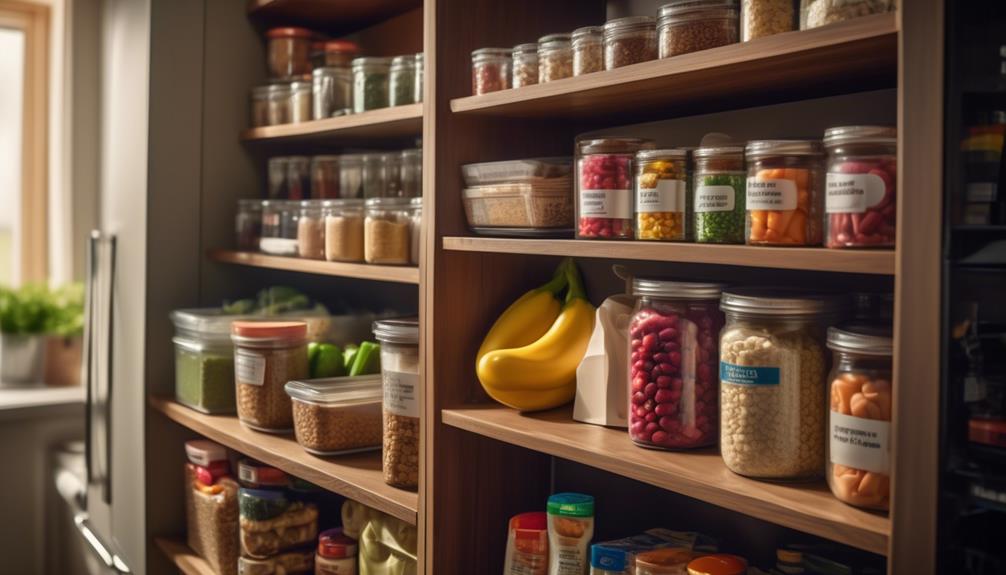
To set yourself up for success on the keto diet, it's important to create a supportive environment. Surround yourself with positive influences who understand and support your dietary goals.
This could include finding a workout buddy, joining a keto support group, or even just having a friend or family member who can provide encouragement and accountability.
Building a strong support system can help you stay motivated and on track with your keto journey.
Setting Up Success
Creating a supportive environment is crucial for achieving success on the Keto diet. By setting up your surroundings to support your goals, you can stay on track and make mindful eating and portion control easier. Here are some practical tips to create a supportive environment:
- Kitchen organization:
- Keep your pantry stocked with keto-friendly options, like nuts, seeds, and low-carb snacks.
- Clear your kitchen of temptations by removing sugary and high-carb foods.
- Meal planning and prepping:
- Plan your meals in advance to avoid impulsive food choices.
- Prep your meals and snacks ahead of time, so you always have keto-friendly options readily available.
These strategies will help you stay focused on your keto journey and make it easier to make healthy choices. Remember, creating a supportive environment is essential for long-term success on the Keto diet.
Surrounding Yourself Positively
Surrounding yourself positively with a supportive environment is key to achieving long-term success on the Keto diet. Maintaining a positive mindset is crucial, as it allows you to stay motivated and focused on your goals. Surround yourself with people who support and encourage your dietary choices. Seek out online communities or local support groups where you can connect with like-minded individuals who are also following the Keto diet.
Engaging in self-care practices is equally important. Take time for yourself each day to relax and unwind. This can include activities such as meditation, yoga, or going for a walk in nature. Prioritize sleep and ensure you're getting enough rest to support your overall well-being.
Conclusion
In conclusion, understanding and controlling cravings on a keto diet is essential for success. By identifying triggers and patterns, implementing strategies, and navigating social situations, you can effectively combat cravings and stay on track.
Creating a supportive environment will also play a crucial role in maintaining your keto lifestyle. Remember, with determination and the right tools, you can overcome cravings and achieve your health goals.
Stay committed and enjoy the benefits of a keto diet.


